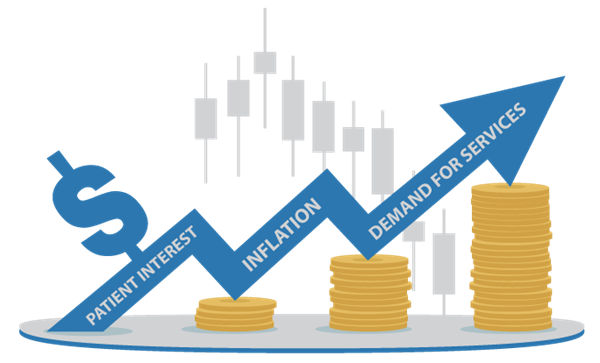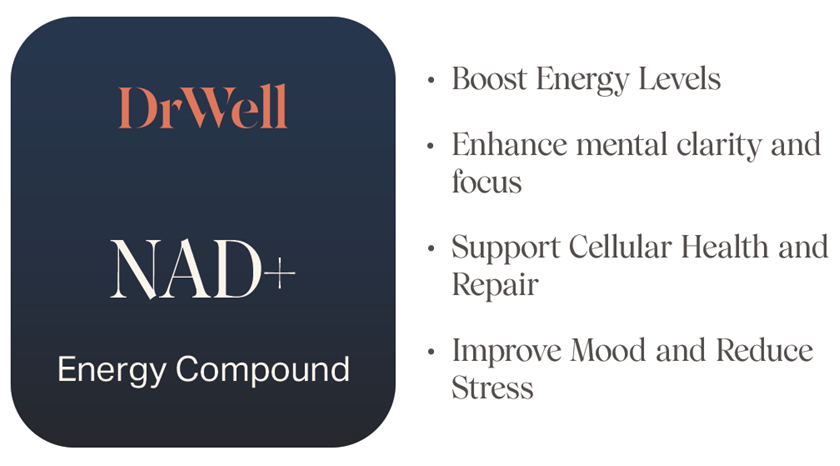 Inflation is a hot topic these days. The causes are myriad, including: 1) an influx of cash from the Federal government, 2) supply chain issues resulting in less inventory and higher demand, 3) more job openings than available applicants, leading to higher wages.
Inflation is a hot topic these days. The causes are myriad, including: 1) an influx of cash from the Federal government, 2) supply chain issues resulting in less inventory and higher demand, 3) more job openings than available applicants, leading to higher wages.
At the end of the day, it affects you and your practice. To retain great, or replace not-so-great staff, wages must increase. Supply chain issues affect all of us resulting in a higher cost of personal protective equipment or other procedural or office supplies. The natural response is to increase your prices to keep up with those increased costs, which of course feeds further inflation. Don’t hate the player, hate the game.
The question is, how do you calculate those increases in your prices? Aside from haphazard and inconsistent increases, there are at least two ways to base those increases on reproducible, accurate data. 1) Increase your prices based on the current inflation rate and 2) demand for your services.
The Hospital Market Basket Index
Hospitals increase their charges each year based on a “market basket index” as described by Medicare.1 For fiscal year 2022, that increase will be 2.0% after a productivity adjustment. Therefore, you can apply a 2% increase to all, or a select group of procedures. In my practice, I’m only applying that 2% increase to bigger ticket items that are less commoditized.
These non-surgically promiscuous patients may not make the connection that less expensive sometimes equals less capable.
What do I mean by commoditized? If everyone offers a specific service such as BOTOX® that’s easily administered, then the consumer begins to think it’s the same service regardless of provider. Sure, we might recognize that not all providers are created equal. But the consumer isn’t always aware of how badly their eyelid ptosis could be after treatment, and even if it is, it will eventually resolve. They may not return to that provider but there’s a Groupon available for another provider. These non-surgically promiscuous patients may not make the connection that less expensive sometimes equals less capable. Because eventually, they will happen upon a good experience at a lesser cost. Once that happens, in their mind, the treatment is commoditized.
Because of the price sensitivity of commoditized services, and the low price point, I’m not applying that inflation rate increase to BOTOX® or her neuromodulator competitors. But I am applying it to larger procedures such as non-surgical facial rejuvenation packages, Mommy Makeovers or any procedure that is uniquely associated with my practice or in high demand.
Surge (Dynamic) Pricing
If there are procedures that are sought after by your patient base, these too should increase as demand increases. In our office, we have an automated process – similar to how we apply the hospital market index to certain procedures – that applies a “demand index” to highly sought after procedures. While our system is automated, if your office manager or patient care coordinator has the time and organizational skillset to manually track procedures and the frequency with which they’re being booked, then you can accomplish the same goal.
In my practice, in the course of scheduling consults and booking procedures, our algorithm tracks which procedures are booked, how often they’re booked and the interval between each booking. If the same procedure is booked three times over the course of a week, that leads to a quicker increase in price than if that same procedure is booked three times over the course of a month.
In the process, our prices automatically reflect the demand for our increasing expertise. This automated change in pricing is an example of dynamic pricing, also known by its less popular euphemistic cousin, surge pricing.
Surge pricing has a bad connotation due to examples of outrageous overcharges, like this Uber ride.2 But dynamic pricing, while essentially the same thing, is an algorithm that uses data to make automatic pricing adjustments as demand increases for a provider’s services.
Benefits of Dynamic Pricing
- Get paid what you’re worth based on increasing demand for your expertise
- Keep up with inflation on a daily and annual basis
- Data-driven decisions in regards to price increases
- Create a sense of urgency with patients checking and rechecking pricing on your website’s Price Estimator3 or chatbot4 to see if prices have increased due to increased demand
- Improved SEO due to Google’s algorithm that rewards websites that have repetitive and longer lasting sessions from patients checking pricing
- Increased lead capture when consumers visit your site and are required to enter their contact info to receive an instant, automated estimate sent to their inbox
I’m a big believer in personalized customer service like all of us in the aesthetic industry. However, discussions about cost and price can quickly become awkward, even personal, from the patient’s perspective. And not just for the patient. Discussions about pricing are apparently awkward for the provider too, considering the circuitous lengths they’ll go to avoiding discussion of price before the consultation5. In an effort to keep the conversation about price relegated to the “it’s business, not personal” realm, it’s best to keep pricing, and price increases, automated.
If the consumer has a sense that the pricing on your website (if you offer it), is similar to the pricing they see after a consultation with explainable differences, this will incur loyalty, or at least reduce mistrust. Similarly, if there is a long interval between the consultation and booking a procedure, such that the original quote is no longer guaranteed, your office staff can “blame” changes in price on an automated, algorithmically-based system. This can eliminate or reduce any suggestion that changes in price are arbitrary.
But the patient needs to be made aware of this dynamic pricing structure. Mention it on your website. Tell the patient during their pre-consultation phone call. This may encourage them to come in pre-approved for financing so they can book and lock in their price before prices methodically increase. If they’re contemplating whether to book on the spot after their consultation, this is yet another opportunity to remind them that the price may change if they delay and book at a later date.
In fact, one of the most commonly used tactics to encourage a patient to book a procedure is telling them prices may change, even if there’s no evidence of a price increase on the horizon. With dynamic pricing based on inflation and demand, the next time your staff tells a patient prices will go up, it may actually be true.
Dr. Jonathan Kaplan is a board-certified plastic surgeon based in San Francisco, CA and founder/CEO of BuildMyHealth6, a price transparency-lead generation platform. You can watch him operate and educate @realdrbae on Instagram7, Snapchat8 and TikTok9.
2 https://www.businessinsider.com/jerry-seinfelds-wife-spent-415-during-ubers-surge-pricing-2013-12
3 http://realdrbae.com/pricing
5 https://modernaesthetics.com/articles/2021-nov-dec/when-to-reconsider-scripts?c4src=issue:feed
7 https://www.instagram.com/realdrbae/
8 https://www.snapchat.com/add/realdrbae
9 https://www.tiktok.com/@realdrbae?lang=en
Click here for the original article written by Dr. Jonathan Kaplan for Modern Aesthetics.
https://modernaesthetics.com/articles/2022-jan-feb/surge-dynamic-pricing-is-here?c4src=search:feed




